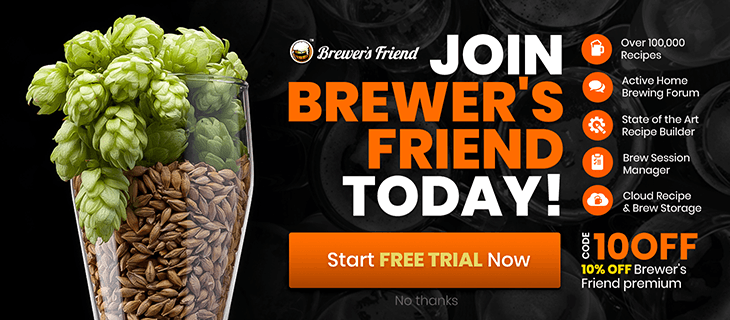- Joined
- Jan 19, 2016
- Messages
- 4,384
- Reaction score
- 3,944
- Points
- 113
Looking back over my recipes, I find that I've done a fair number of brews that involved splitting a bigger batch into smaller ones for brewing more than one style at a time. Since I do batches of at least 10 gallons, I can get 2 5-gallon beers easily. If I mash bigger and either dilute a stronger wort or rely on late addition fermentables or steeped grains for different malt character and color. I can get 3 batches of at least 4 gallons in 3 different styles. My record is four 5-gallon (or nearly so) batches of pretty different beers from a single brew day.
Of course, it's easy to brew a pale or IPA and use different hops in the splits or do styles that will work with very different yeasts like Chico and Belgian types. Fairly different styles with the same basic malt color/flavor notes aren't too hard to pull off. It's a little tougher to figure out how to generate very different styles from one base wort but it can be done.
Some of the combos that I've brewed are:
Lager split for building 2 different yeasts for pitching a couple of bigger batches
House Blonde for building 2 different yeast styles - S-04, US-05, Belgian Wit, S-23, 34/70, etc...
IPA/Stout
Hazy Pale/Witbier
Pale Ale with 3 different hops during fermentation for biotransformation testing
Amber Ale/Irish Red/ Belgian Pale
Irish Red/Octoberfest
Irish Stout/Witbier/Hazy Pale/Golden Ale (codename: Fridge Filler)
Anyone have interesting combinations that you've tried or would like to try for split-batching? Feel free to speculate...just because it hasn't been tried doesn't mean it can't be done.
Of course, it's easy to brew a pale or IPA and use different hops in the splits or do styles that will work with very different yeasts like Chico and Belgian types. Fairly different styles with the same basic malt color/flavor notes aren't too hard to pull off. It's a little tougher to figure out how to generate very different styles from one base wort but it can be done.
Some of the combos that I've brewed are:
Lager split for building 2 different yeasts for pitching a couple of bigger batches
House Blonde for building 2 different yeast styles - S-04, US-05, Belgian Wit, S-23, 34/70, etc...
IPA/Stout
Hazy Pale/Witbier
Pale Ale with 3 different hops during fermentation for biotransformation testing
Amber Ale/Irish Red/ Belgian Pale
Irish Red/Octoberfest
Irish Stout/Witbier/Hazy Pale/Golden Ale (codename: Fridge Filler)
Anyone have interesting combinations that you've tried or would like to try for split-batching? Feel free to speculate...just because it hasn't been tried doesn't mean it can't be done.
Last edited:








